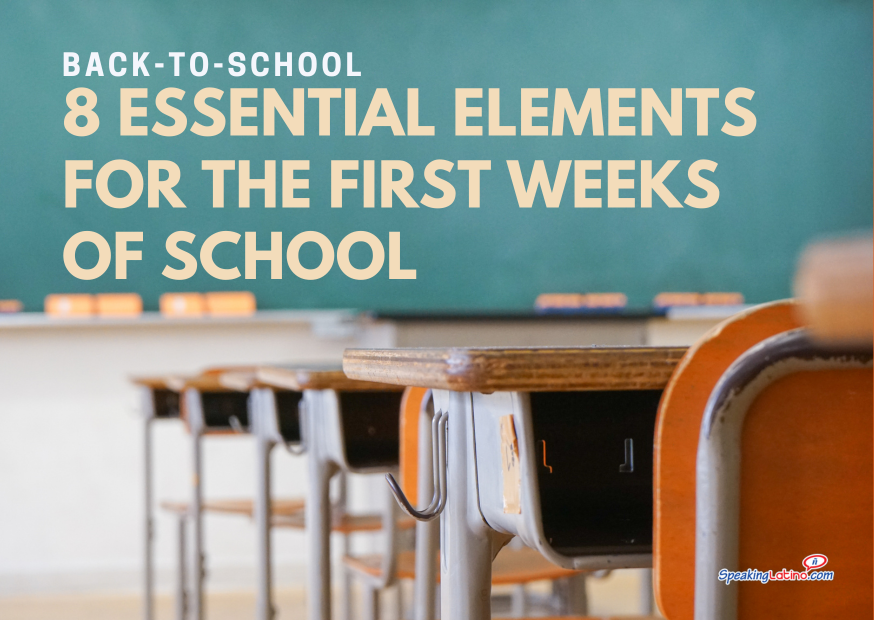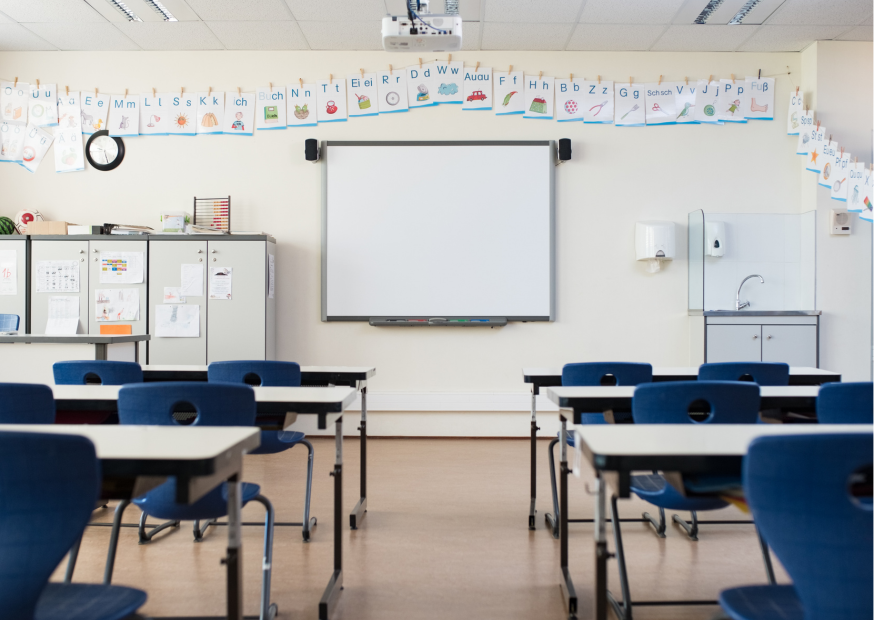
The content of this article is based on the presentation, 1st Weeks of School: Proficiency, Procedures & Positive People by Allison Wienhold, which was part of the World Language Teacher Summit.
The Cornerstone of the Classroom Journey
As the starting whistle of a new academic year sounds, educators are presented with a golden window to cultivate an atmosphere of learning, respect, and community in their classrooms. It's a time that requires foresight and deliberate action.
The initial weeks determine the trajectory of the students' educational experience and are integral to laying a foundation that fosters academic proficiency and productive classroom habits.
Preparation Before Day One
A tranquil summer provides the perfect backdrop for educators to engage in "nap time hustle tasks" – a series of preparation steps ensuring a seamless transition into the hustle and bustle of the school year. This groundwork spans from the physical setup of the classroom, such as arranging bulletin boards, to the intellectual planning, like breaking down the syllabus and curriculum.
Such preemptive efforts also involve creating a monthly roadmap aimed at achieving educational goals within the given timeframe and aligning the curriculum with the non-negotiables of the institution. When these tasks are accomplished before the onset of term, educators can start the school year with clarity and a sound strategy for their and their students' success.
Embracing the "Super Seven" Verbs
In language instruction, an early emphasis on the "super seven" high-frequency verbs -Ser (to be), Estar (to be), Tener (to have), Hay (there is/are), Gustar (to like), Ir (to go), Querer (to want)- in the present tense grounds students in practical language usage. This approach prioritizes acquisition-driven learning, emphasizing comprehension and organic use of language over rote memorization and drills.
A carefully crafted unit plan that might last between two to three weeks incorporates interactive games like "name game speedball," personal interviews, and hands-on experiences with syllabus content, ensuring students are not merely passive recipients of information but active participants in their language learning journey.
Teaching Procedures and Expectations
Instilling procedures early on is paramount. Reiterating classroom expectations, such as the proper care for technology or the protocol for participating in discussions, outlines the behavioral blueprint for students. Creative strategies, such as attention-grabbing call-and-response cues in the language of instruction, engage students while tying in with pedagogical aims, making the start of each class an educational moment in itself.
Displaying expectations prominently in the classroom environment as visual reminders ensures these rules remain at the forefront of students' minds. The reinforcement of these routines, especially during the first week, implants them as a natural part of the classroom culture, fostering an environment of efficiency and mutual respect.
Grading and Syllabus Breakdown
Grading policies and a transparent, comprehensive syllabus set the stage for academic expectations. As students are overwhelmed with information at the beginning of the year, it’s crucial to break down syllabuses into clear, manageable bullet points. Incorporating activities like the "What is your name?" game provides a practical framework for assessing students' participation, material readiness, and attendance.
Interactive Speaking Activities: Let the Conversations Begin
Language-learning thrives on conversation. Activities that encourage students to talk about their summer experiences using past tense verbs, or engage in other communicative challenges such as question card activities or icebreaker games, promote interaction and pave the way for a community of learners.
These activities should be designed to be inclusive and adaptable to different spaces, ensuring that students have ample opportunity to build both language proficiency and social connections within their new classroom environment.
Proficiency Level Puzzles
Language proficiency levels are often an abstract concept for students. Introducing these levels through hands-on activities like the "proficiency puzzle" provides a concrete approach to understanding and tracking progress.
Coupling this with a variety of tasks, including technology setup and engagement with classroom resources, affirms the utility of this system. Students learn to gauge their own development in the target language, making individual goals meaningful and measurable.
Classroom Management Measures
Effective classroom management stems not just from laying down rules but also from ensuring conformance through consistent reminders and tangible systems, such as using cell phone pockets. By delineating clear expectations and following through with enforcement, what begins as the ideal quickly becomes the norm.

A tranquil summer provides the perfect backdrop for educators to engage in "nap time hustle tasks" – a series of preparation steps ensuring a seamless transition into the hustle and bustle of the school year.
Fostering Parental Engagement
A child's educational journey extends beyond the school walls and includes parental involvement. Establishing positive communication channels with parents lays a foundation for ongoing collaboration. Whether through parent-teacher contracts, input conferences, or open Google forms, these efforts provide an essential platform for learning more about students' backgrounds and unique needs, allowing for more individualized support.
FAQs About Strategies for First Weeks of School
What specific activities and strategies are recommended for the first weeks of school to create a positive classroom environment and facilitate language acquisition?
Several activities and strategies can be implemented during the initial weeks of school to foster a positive classroom environment and support language acquisition:
- Conducting one-on-one meetings with teachers to allow parents to share information about their students.
- Using open Google forms to gather insights from parents about their students.
- Creating posters with a purpose, such as "I can" statements, to set clear learning objectives.
- Engaging students in activities like sharing about their summer experiences to encourage communication and community building.
- Implementing no-prep activities in different languages to promote speaking and writing skills.
- Incorporating games and question cards to practice language skills and foster interaction among students.
- Establishing classroom routines and procedures to familiarize students with expectations and create a structured learning environment.
- Emphasizing the importance of proficiency levels and setting realistic language learning goals to boost student confidence.
- Encouraging students to celebrate their progress and achievements in language acquisition.
- Providing resources and support for teachers to plan effectively and engage students in meaningful learning experiences during the initial weeks of school.
By implementing these strategies consistently and creatively, educators can create a language-rich environment that motivates students to speak more in the target language and enhances their language proficiency over time.
How can teachers tailor these ideas to fit their unique classroom situations and student needs?
Teachers can customize these ideas to align with their specific classroom situations and student needs by:
- Adapting activities: Modify suggested activities to suit the language proficiency levels and interests of students in the classroom.
- Incorporating cultural relevance: Integrate cultural elements that resonate with the student population to enhance engagement and relevance.
- Adjusting pacing: Tailor the pace of introducing procedures and language activities based on the dynamics and learning styles of the students.
- Providing differentiated instruction: Offer varied tasks and support to cater to diverse learning abilities and preferences within the class.
- Personalizing goals: Collaborate with students to set individualized language learning goals that are challenging yet achievable.
- Utilizing technology: Integrate technology tools and platforms that can enhance language practice and communication among students.
- Seeking feedback: Regularly gather feedback from students to assess the effectiveness of activities and make adjustments as needed.
- Building relationships: Foster positive relationships with students to create a supportive and inclusive classroom environment conducive to language acquisition.
- Collaborating with colleagues: Exchange ideas and strategies with fellow educators to gather insights and refine approaches for better outcomes.
- Reflecting and iterating: Continuously reflect on the implementation of activities and strategies, making iterative improvements based on observations and feedback from students.

Displaying expectations prominently in the classroom environment as visual reminders ensures these rules remain at the forefront of students' minds.
How can the implementation of these suggestions aid in establishing a foundation for success for both teachers and students throughout the academic year?
The implementation of these suggestions can aid in establishing a foundation for success for both teachers and students throughout the academic year by:
- Building a positive classroom culture: Engaging students in meaningful activities and fostering communication from the beginning cultivates a supportive and inclusive classroom environment.
- Setting clear expectations: Establishing classroom routines and procedures early on helps students understand what is expected of them, leading to a structured learning environment.
- Promoting language proficiency: Emphasizing proficiency levels and setting realistic language learning goals enables students to track their progress and work towards achievable milestones.
- Enhancing student engagement: Incorporating
- Strengthening teacher-student relationships: By getting to know students through initial meetings and activities, teachers can build rapport and better support individual student needs throughout the year.
- Encouraging goal setting: Collaborating with students to set personalized language learning goals fosters a sense of ownership and motivation for continuous improvement.
- Providing support and resources: Offering resources and guidance for effective planning and implementation empowers teachers to deliver engaging lessons and support student growth.
- Fostering a growth mindset: Celebrating student achievements and progress instills confidence and a positive attitude towards language learning, encouraging a growth mindset.
- Creating a sense of community: Engaging students in activities that promote communication and collaboration helps establish a cohesive classroom community where students feel valued and supported.
- Establishing a strong foundation: By laying the groundwork for effective communication, language practice, and classroom procedures early on, teachers and students can build upon this foundation for continued success throughout the academic year.
The First Weeks as a Launchpad for Yearlong Success
The opening chapters of an academic year hold profound potential for shaping not just the learning experience but also the entire classroom dynamic. Every element of the first weeks—acquisition-driven instruction, syllabus structure, classroom management, communication strategy—works in concert to build a robust and nurturing educational environment.
By diligently mapping out the first weeks with thoughtful consideration for both language acquisition and classroom culture, educators can ensure that students are genuinely prepared for the exciting educational odyssey ahead. This comprehensive road map aspires to guide new teachers through the multi-layered aspects of the initial school weeks, providing a scaffolded approach to a triumphant school year.
From the decorous halls of a school to the interactive tapestry of the classroom, the message is clear: a well-prepared beginning is the harbinger of a successful educational future.
Discover more language teaching techniques to help you in your classroom.